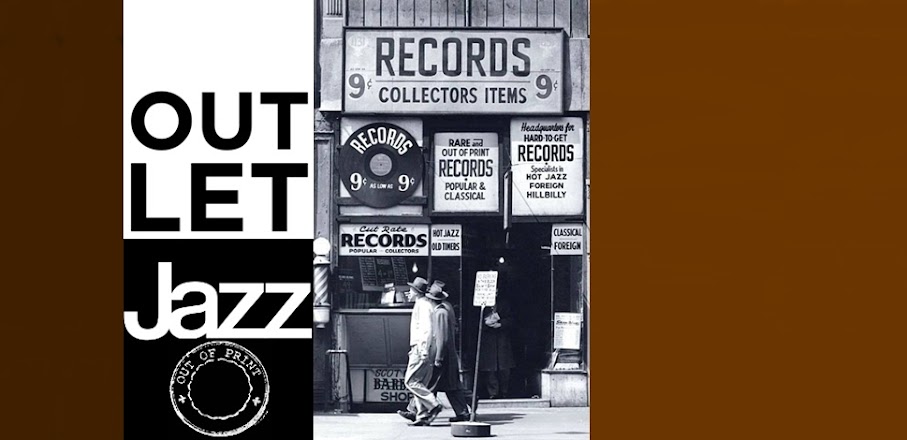Virgil Gonsalves
Jazz • San Francisco Style
✤Liberty LJH 6010✤
Virgil Gonsalves was born on September 5, 1931 in Monterey, where he grew up and attended elementary and high school. He later enrolled at the San Francisco State University. After graduating in 1952, he began touring with the bands of Alvino Rey, Jack Fina and Tex Beneke. Between seasons, Virgil introduced an artfully arranged sextet at concerts and club dates, contributing to the development of a nascent modern jazz scene in San Francisco, notably represented by the Dave Brubeck Trio.
In June 1954 some 400 students crowded the Tamalpais High School auditorium to dance to the beat of the Tam Dance Band. The featured attraction of the date was the appearance of the Virgil Gonsalves Sextet whose increasingly frequent and successful modern jazz performances were beginning to attract the attention of concert promoters and owners of the best clubs.
The work that the Virgil Gonsalves sextet had been developing particularly impressed Monterey local disc jockey Johnny Adams. In his eagerness to spread the word, Adams sent Gonsalves with tapes to a few jazz record labels, including the local Fantasy, as well as others in Los Angeles, such as Pacific Jazz and Nocturne Records.
After several weeks and a couple of meetings in L.A., Gonsalves finally struck a deal with Harry Babasin, producer and bassist for the newly formed and up-and-coming Nocturne label — but on one condition: for the recording session, instead of employing Gonsalves's usual San Francisco bandmates, Babasin would recruit a group of better known Los Angeles based jazz musicians in order to include the album in their "Jazz in Hollywood Series".
Babasin arranged a recording session at Western Recorders for September 29, 1954. With engineer John Neal on board and producer Babasin on bass, the sextet was rounded out by leader Gonsalves on baritone, the former Gene Krupa tenor saxophonist Buddy Wise, valve trombonist Bob Enevoldsen, pianist Lou Levy, and drummer Larry Bunker. The result was an excellent 10-inch album released in February 1955.
In November 1955, Gonsalves traveled to Los Angeles to record — again with sound engineer John Neal — a 12" for Liberty Records, but this time he did it with his original sextet, which by now had remained stable since high school. Its members — and Virgil's schoolmates for that matter — were Bob Badgley, valve trombone; Dan Pateris [a.k.a. Danny Patiris], tenor sax; Clyde Pound, piano; Max Hartstein, bass; and Gus Gustafson, drums. The arrangements were provided by Jerry Cournoyer and Bob Searle. After their first recording session, bassist Max Harstein fell ill and had to be replaced by the excellent Ron Crotty, who previously played with Brubeck. On this album, Gonsalves' work comes off with inventiveness and flow, and he managed to demonstrate his inherent rhythmas a soloist. The interplay between him and Dan Patiris keeps the swinging level of this set of the so-called San Francisco Jazz Style performances. *freshsoundrecords.com*
Music has played an integral role in the development of San Francisco as the cultural outpost of the West. Her Opera House is of world renown; her symphony orchestra and museums are rated with the nation’s finest. However, until recently, San Francisco's contributions to the jazz scene were limited to Lu Watters' Yerba Buena Jazz Band, a driving crew of Dixielanders; Kid Ory's Creole Band; and the usual assortment of unorganized groups who played mostly for their own pleasure (and little remuneration) at the city's many night spots.
In 1950, however, the City by the Golden Gate rose to national jazz prominence on the steely fingertips of Dave Brubeck, a pianist with an immense classical background, who gave the nation the first new sound in a decade. His fertile, imaginative application of polytonality in jazz started a whole new trend in music... one that could really be called Jazz — San Francisco Style.
Thus began the renaissance of jazz in San Francisco. Many groups with varying sounds began to make their mark in the Bay area.
Perhaps of all these, the group led by Virgil Gonsalves is the one following closest in Brubeck’s footsteps. Gonsalves' cool articulation on the baritone sax has jazz critics hailing him as the hottest star on this instrument since the heyday of Gerry Mulligan.
"JAZZ-SAN FRANCISCO STYLE" is a Swinging album! The vibrant solo efforts are indicative of the uninhibited jazz feel that Virgil and his group generate. The spirit and drive shown in this LP give us the feeling that Virgil Gonsalves will soon emerge as one of the nation’s leading jazz figures. *Harry Babasin (liner notes)*
1 - Whitewash
(Cournoyer)
2 - Our Love Is Here To Stay
(Gershwin)
3 - Lost World
(Cournoyer)
4 - I'll Take Romance
(Oakland, Hammerstein)
5 - Searle's Corner
(Searle)
6 - Viva Zapata
(Shorty Rogers)
7 - Half Mine
(Searle)
8 - Goody-Goody
(Mercer, Malneck)
9 - Gar-Din
(Marabuto)
10 - My Heart Stood Still
(Rodgers, Hart)
11 - Fascinatin' Rhythm
(Gershwin)
12 - Bags' Groove
(Gonsalves)
Virgil Gonsalves (baritone sax), Bob Badgley (valve trombone), Dan Pateris (tenor sax),
Clyde Pound (piano), Ron Crotty [#1, #4 to #11] (bass),
Max Hartstein [#2, #3. #12] (bass), Gus Gustafson (drums).
Recorded at Capitol Records, Hollywood, California, November 1955


Back in February 2023, OUTLET JAZZ took this record from the Internet Archive and posted it without realizing that it was wrong because the music belonged to a different album.
ReplyDeleteNow, thanks to the remastering of the Fresh Sound Records, it's time to fix the error.
Thanks also to our friend Keith for helping us.
https://1fichier.com/?k2bugeekj8nmvvkqmt0r
ReplyDeleteMany thanks, Keith and blbs!
ReplyDeleteMuchas gracias. ¿Tenemos datos del otro album?.
ReplyDelete